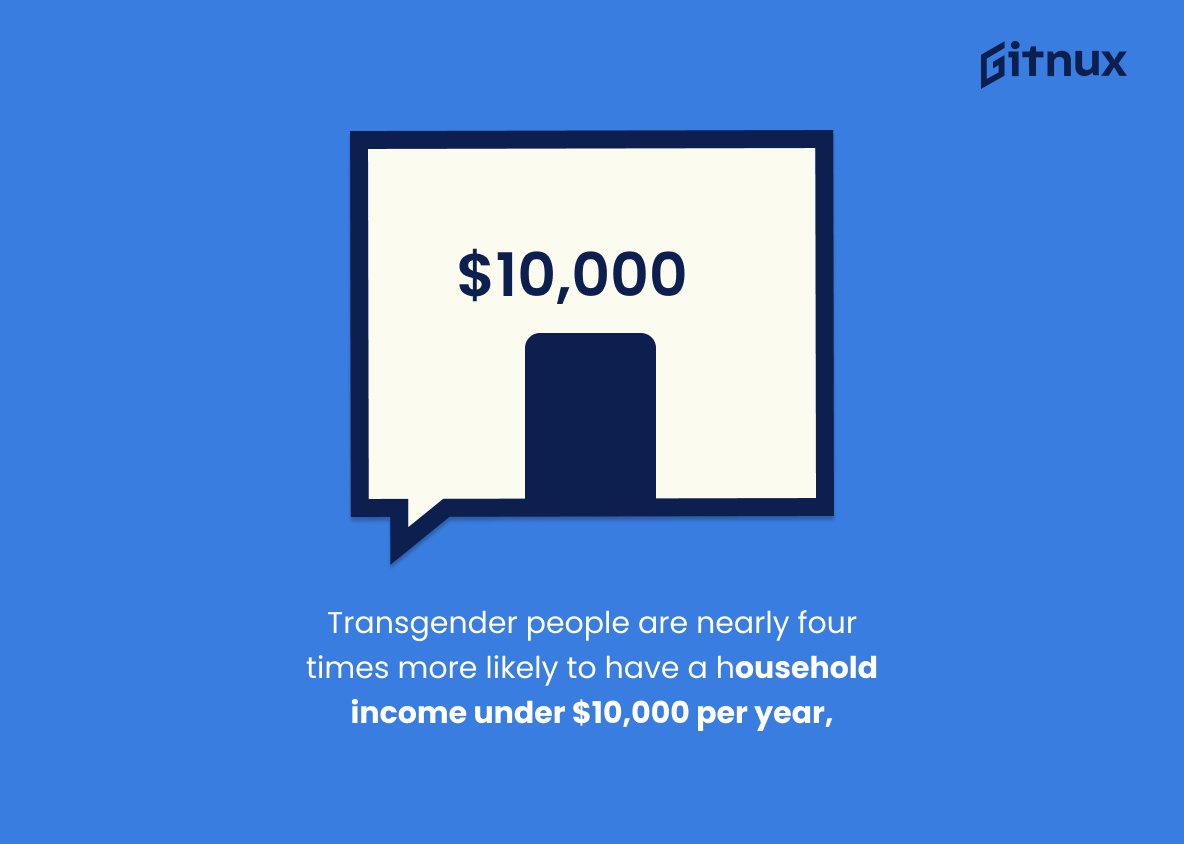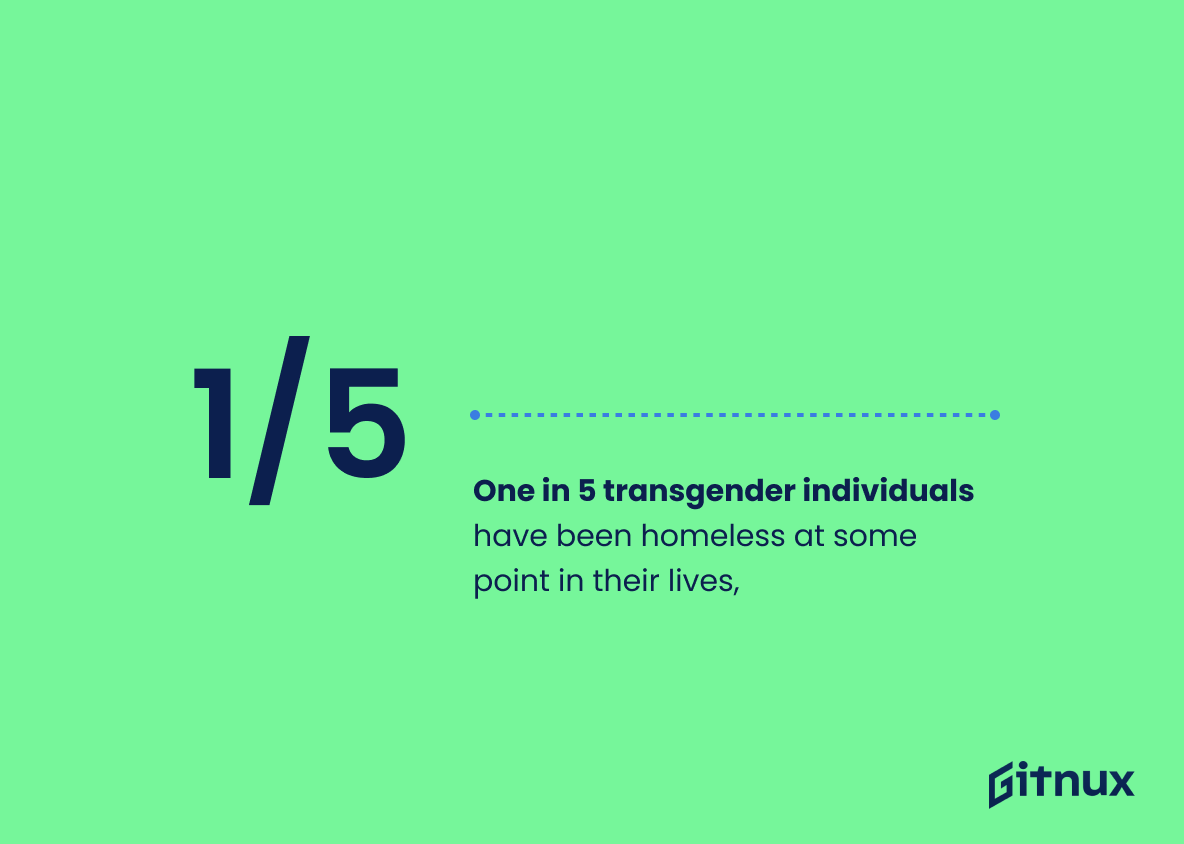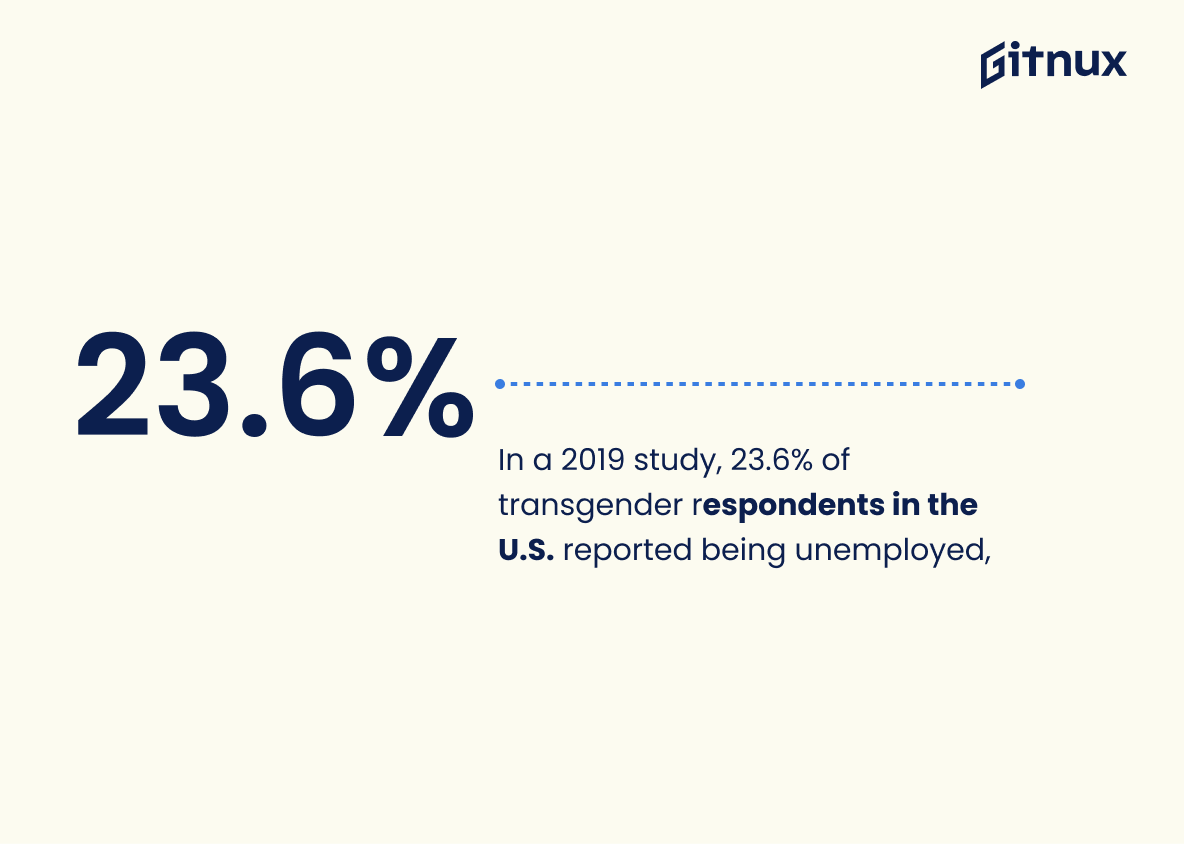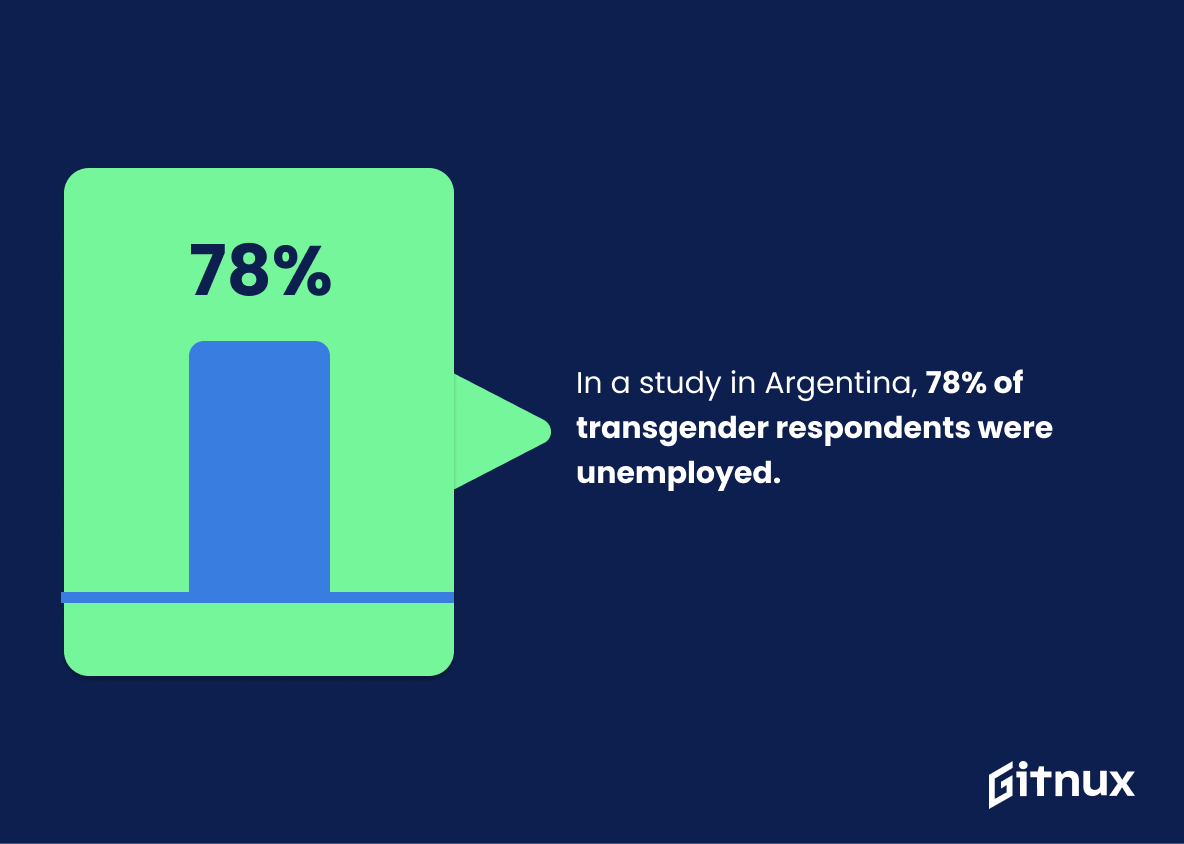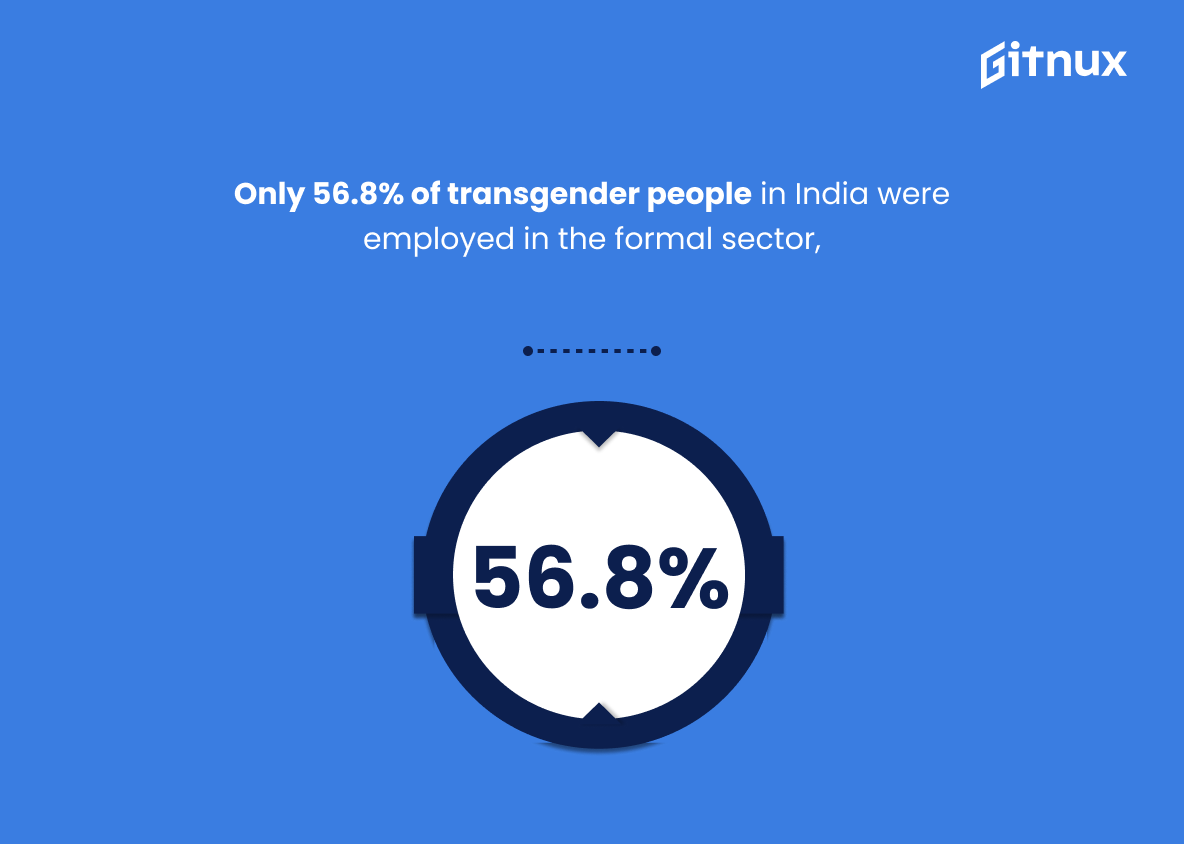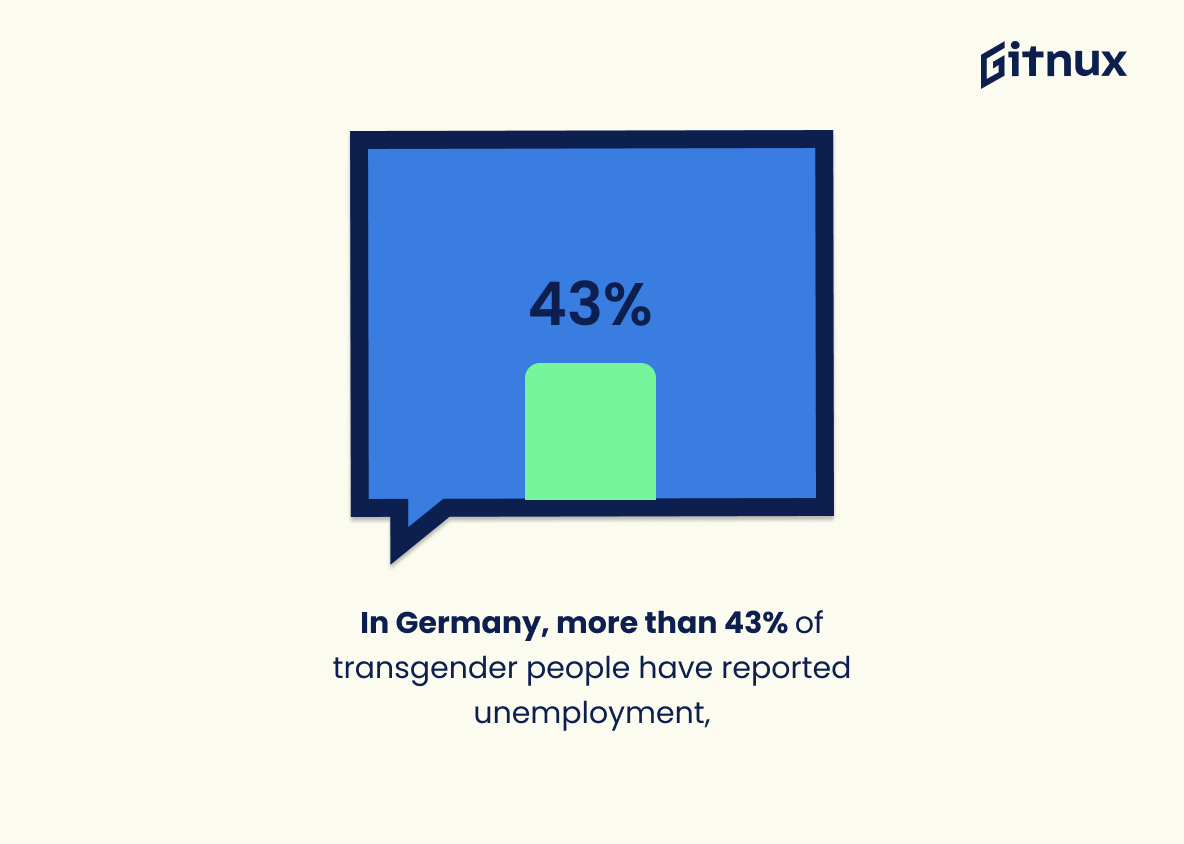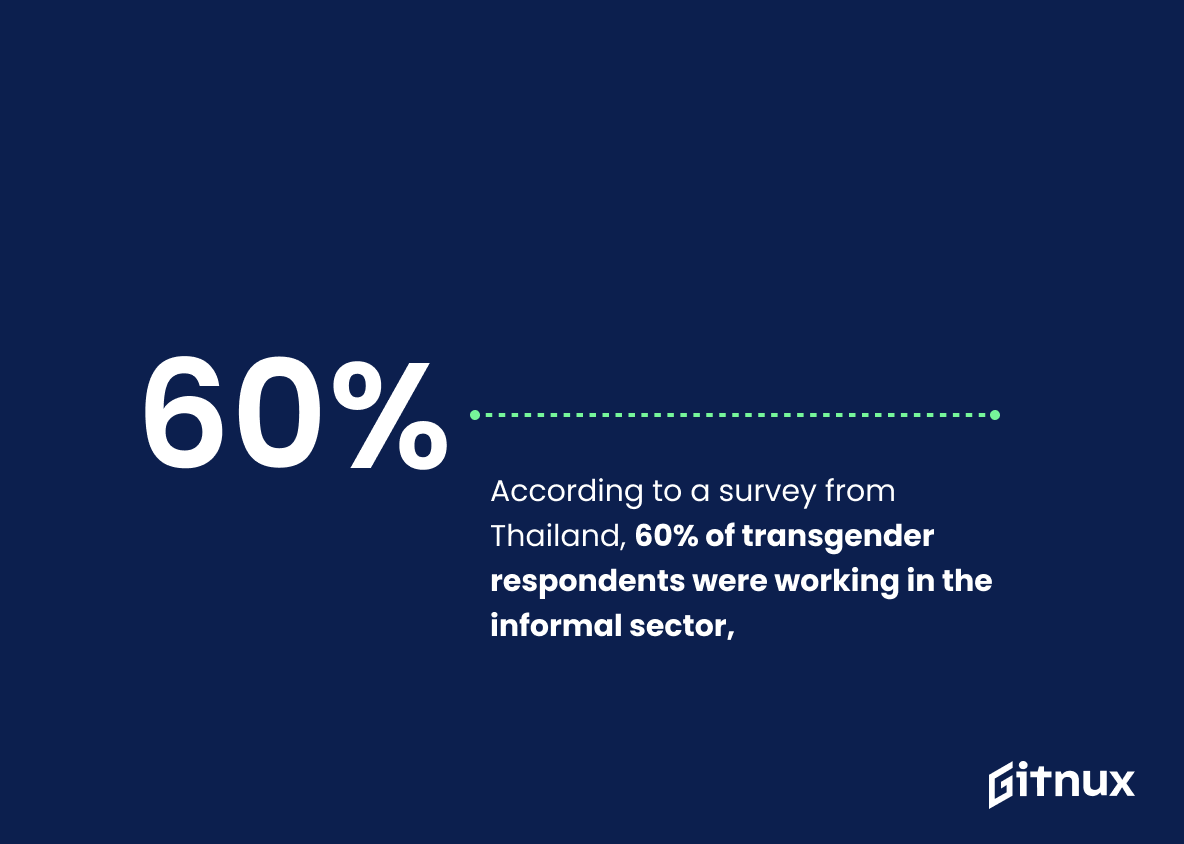Transgender individuals encounter distinctive challenges in employment, ranging from workplace discrimination to high rates of unemployment and underemployment. These obstacles often exclude them from economic opportunities that many others can access.
One in four transgender individuals has lost a job due to bias. Over 78% have faced harassment at work. Transgender unemployment stands at 15%, and 30% reported job dismissal or denial of promotions in 2015. Transgender people of color experience unemployment at four times the national rate.
Economic struggles are stark, with nearly four times the likelihood of a household income under $10,000 per year. One in five transgender people have experienced homelessness at some point in their lives. In states prohibiting gender identity discrimination, the transgender unemployment rate is 9%.
Youth within this community are 2.5 times more likely not to be engaged in school or work. As for additional percentage figures – 47%, 84%, 23.6%, 51%, 43%, 60% – these need further context to make sense.
These statistics highlight the urgent need for continuing the fight against inequality and injustice faced by transgender individuals across all industries worldwide.
Transgender Unemployment Statistics Overview
Transgender people of color experience four times the national unemployment rate,
This statistic is a stark reminder of the systemic discrimination that transgender people of color face in the job market. It highlights the need for greater efforts to ensure that all members of the transgender community have access to equal employment opportunities. It also serves as a call to action for employers to create more inclusive and equitable workplaces.
Transgender people are nearly four times more likely to have a household income under $10,000 per year,
This statistic is a stark reminder of the financial struggles that many transgender people face. It highlights the fact that transgender individuals are disproportionately affected by poverty and lack of economic opportunity. This statistic is a call to action to address the systemic issues that are preventing transgender people from achieving financial stability.
One in 5 transgender individuals have been homeless at some point in their lives,
This statistic is a stark reminder of the harsh realities faced by transgender individuals. It highlights the fact that, despite the progress made in recent years, transgender individuals are still facing discrimination and marginalization in society, leading to a lack of access to stable housing and employment opportunities. This statistic is a call to action to ensure that transgender individuals have the same rights and opportunities as everyone else.
States banning gender identity discrimination have unemployment rates for transgender people of 9%,
This statistic is a powerful reminder of the positive impact that legislation can have on the lives of transgender people. It shows that when states take action to protect transgender individuals from discrimination, it can lead to a significant decrease in unemployment rates. This is an important reminder that laws and policies can have a real and tangible effect on the lives of transgender people, and that we must continue to fight for their rights and protections.
Nearly 30% of transgender workers report experiencing discrimination in their workplace,
This statistic is a stark reminder of the discrimination that transgender workers face in the workplace. It highlights the need for greater awareness and understanding of the unique challenges that transgender individuals face when it comes to finding and maintaining employment. It also serves as a call to action for employers to create more inclusive and supportive work environments for transgender employees.
The unemployment rate for transgender individuals in the European Union is almost 10%,
This statistic is a stark reminder of the reality that transgender individuals in the European Union face when it comes to unemployment. It highlights the need for greater efforts to be made to ensure that transgender individuals have access to the same employment opportunities as everyone else. It also serves as a call to action for policy makers to take steps to reduce the unemployment rate for transgender individuals in the European Union.
Transgender adults in the UK are twice as likely to be unemployed,
This statistic is a stark reminder of the challenges faced by transgender adults in the UK when it comes to employment. It highlights the need for greater efforts to ensure that transgender individuals have equal access to job opportunities and are not discriminated against in the workplace. It also serves as a call to action for employers to create an inclusive and supportive environment for transgender employees.
In a 2019 study, 23.6% of transgender respondents in the U.S. reported being unemployed,
This statistic is a stark reminder of the reality that transgender individuals face in the workforce. It highlights the fact that transgender people are disproportionately affected by unemployment, and that more needs to be done to ensure that they have equal access to employment opportunities. This statistic is a call to action for employers to create more inclusive and equitable workplaces for transgender individuals.
In a study in Argentina, 78% of transgender respondents were unemployed,
This statistic is a stark reminder of the harsh reality that transgender individuals face when it comes to employment. It highlights the need for greater efforts to be made to ensure that transgender people have access to the same opportunities as everyone else. It also serves as a call to action for employers to be more inclusive and to create a more equitable workplace.
Only 56.8% of transgender people in India were employed in the formal sector,
This statistic is a stark reminder of the reality that transgender people in India face when it comes to employment opportunities. It highlights the fact that the majority of transgender people in India are not able to access the same job opportunities as their cisgender counterparts, and that they are often excluded from the formal sector. This statistic is a call to action to ensure that transgender people in India are given the same opportunities to work and succeed in the formal sector.
A survey in Mexico reported that 51% of transgender respondents were unemployed,
This statistic is a stark reminder of the reality that transgender individuals face when it comes to employment. It highlights the fact that, despite progress in many areas, transgender people are still facing significant discrimination in the workplace. This statistic serves as a call to action to ensure that transgender individuals have access to the same opportunities as everyone else.
In Germany, more than 43% of transgender people have reported unemployment,
This statistic is a stark reminder of the difficulties faced by transgender people in Germany when it comes to finding employment. It highlights the need for greater awareness and understanding of the challenges faced by transgender people in the workplace, as well as the need for more inclusive policies and practices to ensure that transgender people have equal access to employment opportunities.
According to a survey from Thailand, 60% of transgender respondents were working in the informal sector,
This statistic is a telling indication of the struggles faced by transgender individuals in the job market. It highlights the fact that a majority of transgender people are unable to find employment in the formal sector, and are instead relegated to the informal sector. This is a concerning trend, as it suggests that transgender individuals are being denied access to the same opportunities as their cisgender counterparts.
Conclusion
The statistics presented in this blog post demonstrate the alarming rate of unemployment among transgender individuals around the world. From 1 in 4 losing a job due to bias, to more than 78% reporting harassment at work, and even up to 84% experiencing discrimination or harassment in Australia – it is clear that there is an urgent need for greater protection and support for trans people when it comes to employment opportunities.
The data also highlights how much worse these figures are for transgender people of color, as well as those living with lower incomes or who have experienced homelessness. It is essential that governments act now by introducing laws which protect against gender identity discrimination so that all members of society can benefit from equal access to jobs and career progression without fear of prejudice or mistreatment.
References
0. – https://www.ilga-europe.org
1. – https://www.naesv.org
2. – https://www.tagesspiegel.de
3. – https://www.hrc.org
4. – https://www.apcom.org
5. – https://www.interactadvocates.org
6. – https://www.lgbtmap.org
7. – https://www.ustranssurvey.org
8. – https://www.natcen.ac.uk
9. – https://www.healthright.org
10. – https://www.lgbtmap.org
11. – https://www.indiaspend.com
12. – https://www.transequality.org

